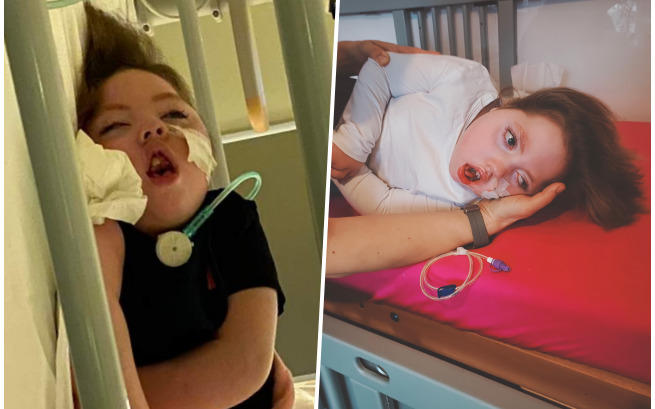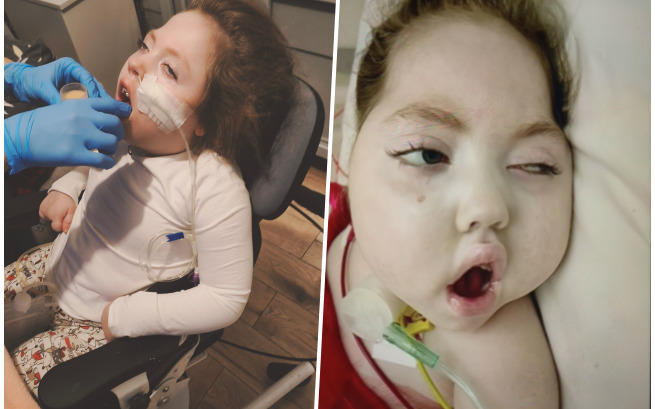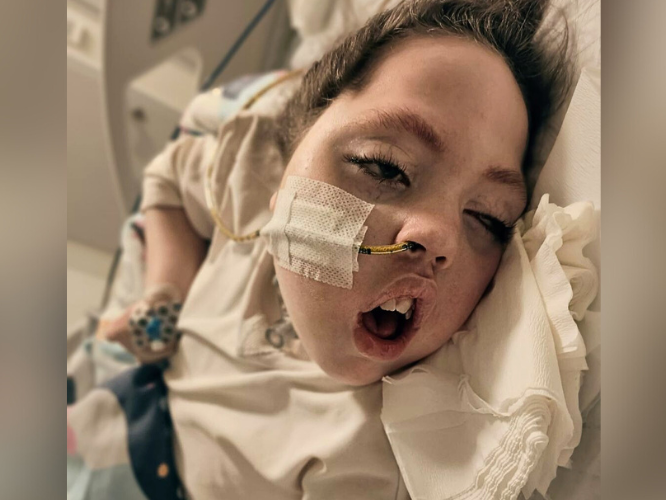There are moments that divide life into “before” and “after.” For Klara’s mother, that moment came when her baby girl was only eight weeks old. One instant, she was smiling, warm, and alive — a tiny ray of sunshine who lit up her world. The next, she was gone.Without warning, Klara’s heart stopped.Ten minutes without breathing. Ten minutes of fighting for life. Ten minutes that changed everything.“When her heart stopped,” her mother says softly, “mine did too.”Doctors managed to bring Klara back, but the damage was devastating. The lack of oxygen to her brain left her with severe cerebral palsy, drug-resistant epilepsy, Fanconi syndrome, asthma, and chronic pancreatitis. The little girl who had once wriggled in her mother’s arms was now trapped in her own body — unable to move, speak, swallow, or even blink.Klara lives in a state of minimal consciousness. Every breath she takes comes through a tracheostomy tube, and every meal is delivered through a feeding tube. Each day is a struggle not just for progress, but for survival itself.At six years old, her heart stopped again. Another ten minutes of horror, another brush with death. Somehow, she survived once more — fragile, but still here. “I think love keeps her alive,” her mother whispers. “If love could heal, she would be the healthiest child in the world.”But love, as fierce as it is, can’t stop the seizures.There was a time when Klara’s epileptic attacks lasted four days straight — wave after wave, without rest, without relief. Each one a storm threatening to take her away …
There are moments that divide life into “before” and “after.” For Klara’s mother, that moment came when her baby girl was only eight weeks old. One instant, she was smiling, warm, and alive — a tiny ray of sunshine who lit up her world. The next, she was gone.
Without warning, Klara’s heart stopped.
Ten minutes without breathing. Ten minutes of fighting for life. Ten minutes that changed everything.
“When her heart stopped,” her mother says softly, “mine did too.”

Doctors managed to bring Klara back, but the damage was devastating. The lack of oxygen to her brain left her with severe cerebral palsy, drug-resistant epilepsy, Fanconi syndrome, asthma, and chronic pancreatitis. The little girl who had once wriggled in her mother’s arms was now trapped in her own body — unable to move, speak, swallow, or even blink.
Klara lives in a state of minimal consciousness. Every breath she takes comes through a tracheostomy tube, and every meal is delivered through a feeding tube. Each day is a struggle not just for progress, but for survival itself.
At six years old, her heart stopped again. Another ten minutes of horror, another brush with death. Somehow, she survived once more — fragile, but still here. “I think love keeps her alive,” her mother whispers. “If love could heal, she would be the healthiest child in the world.”
But love, as fierce as it is, can’t stop the seizures.

There was a time when Klara’s epileptic attacks lasted four days straight — wave after wave, without rest, without relief. Each one a storm threatening to take her away forever. Today, the seizures are shorter but still relentless, stealing her strength and leaving her exhausted.
In 2023, Klara endured three surgeries — one for acute pancreatitis, another for a leaking gastrostomy tube, and a third for a stomach perforation. Each one was life-saving, each one left her weaker. The following year brought another — for
intestinal obstruction — and though the doctors saved her again, the repeated procedures left her small body curved and scarred.
“She’s suffering more with each passing year,” her mother says, her voice trembling. “Her body is tired, but her eyes… her eyes are still asking for help.”
That help now feels harder to find. Klara requires round-the-clock care, specialized medical equipment, and regular rehabilitation to keep her body functioning. The cost of her care — therapy sessions, hospital stays, oxygen supplies, and feeding formulas — has become unbearable for her mother, who has devoted every moment and every cent to her daughter’s survival.
“I care for her every day, every night. I don’t sleep much. I listen for her breathing, I clean her tubes, I hold her hand and whisper to her. I tell her she’s safe. But I can’t do it alone anymore,” she confesses.

Still, she refuses to lose hope. “Hope,” she says, “is what keeps me going. Hope that one day she’ll be free from pain. Hope that she can feel love, warmth, and peace.”
Klara’s mother knows she can’t change the past — she can’t undo those ten minutes that stole so much. But she still dreams of giving her daughter the dignity and comfort she deserves.
“I’m asking for help,” she pleads. “For my little girl who can’t ask for herself. Every donation, every kind word, every bit of support — it means life for us. It means one more day I can give her what she needs.”
There’s no miracle cure for Klara’s condition. But there is a miracle in her survival — in every breath she takes, in every heartbeat that still defies the odds. And in the quiet strength of a mother who refuses to stop fighting, even when the world seems to have stopped long ago.
Because love doesn’t give up. Not even when the heart breaks.
Not even when hope feels small.
Leave a Reply